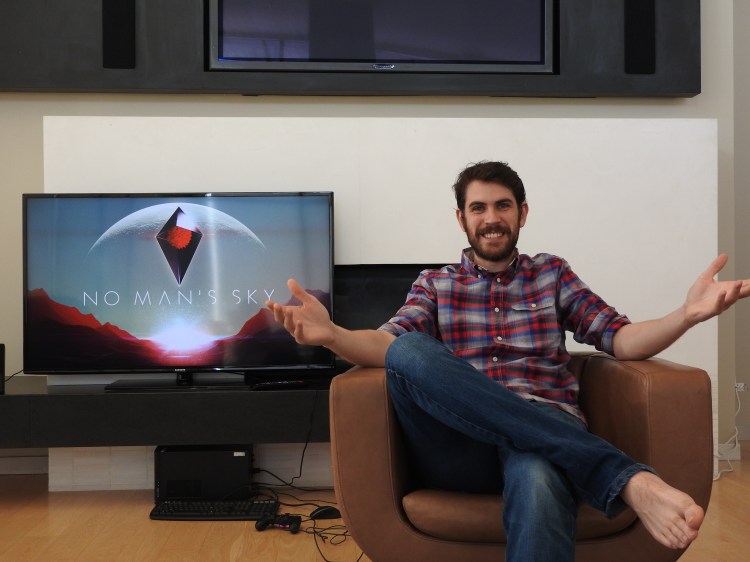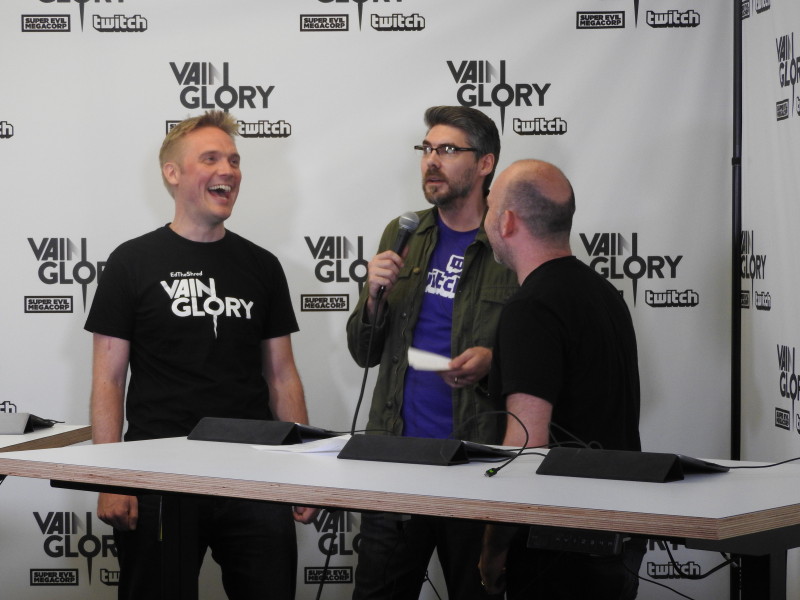Mike Fischer, vice president of marketing at Epic Games
On the long gestation of Epic’s next game, Fortnite:
“It started out as a really small-scale project. It was the outcome of an internal game jam. Then, as we saw the potential in the game, the scale and scope grew. At one point there was also the decision to move it to Unreal Engine 4, to make it as a testbed initially, and then hopefully as we’re rolling out to the public a showcase of some of the things the engine can do.
“The game is very unconventional in the sense that it’s a cartoony world, but it’s completely procedurally generated. You can create all kinds of worlds and traps and interact with the environment. The A.I. for the husks is incredibly clever. It looks, on the surface, like a wacky, fun, simple type of game, but the technology that delivers it is world class.”
Owen Mahoney, CEO of Nexon
On the changes sweeping through gaming:
“I was interested in what [Unity CEO] John Riccitiello said at your summit. I was thinking back to Nexon’s IPO, which was in the end of 2011. At the time, I remember talking to fund managers, who were very sophisticated, around the world. The viewpoint at that time, with what seemed like a lot of justification, was, ‘Everybody knows the games business is transitioning from console to Facebook games.’ And I’d think, ‘Wait a minute. Everybody doesn’t know that.’ I can see why you’d think that, but that’s not necessarily a trend. What was clear at that point was that revenue was going up on Facebook and the console cycle was down. But that doesn’t mean people were stopping playing console games to play casual games on top of Facebook.
“I was thinking about this because of a conversation we had internally. The constant of all this goes back to a question of, ‘Are there fun games to play? Are game developers really focusing on creating fun online games, games that are built to last?’ Everything else, in my view, is secondary to that. It may not seem sexy to say that, or say that’s the new thing, because it’s been a constant throughout the history of the industry. But it seems to me that whenever the game industry has gotten away from that and thought the trend was about something else, or that the big topic in the industry was about something else, then the industry has gotten itself in trouble.
“The industry has gone through generations of thinking about graphical fidelity as the primary thing, or Facebook games as the primary thing, or monetization strategies as the primary thing. What really matters is game quality. If you think about the game companies that we all admire, they’ve been companies that have stayed close to that path and not worried too much about what the rest of the crowd is thinking about.
“We’re going to be successful company if we stay close to that vision. We will not be as successful if we stray from that vision too much.”
Ian Roxburgh, creative director of Total War: Warhammer at Sega’s Creative Assembly
On switching from historical games to fantasy:
“There’s a lot of history buffs in the studio, for obvious reasons, but we’ve wanted to make a fantasy game for years. Over the last three or four years we’ve been recruiting heavily to beef up our skill set and train people up so that we have the ability to have two Total War teams working in parallel with each other. We can carry on making our history games and also do a Warhammer game without impacting the schedule for either.
“Imagine what it’s like for artists and animators and designers. Even the coders — just playing with these things is genuine excitement. We love our history games, but this is something completely different. It’s a real fresh start.”
Scott Hartsman, CEO of Trion Worlds
On the new mission for the company:
“The original Trion vision was about technology, technology, technology. Over time that morphed into one that was about games and customers, games and customers, games and customers. Then that expanded into games and customers with our games as well as partnered games. That’s where we are right now. It has to be about the games. It can’t ever be all about the tech, because customers can’t care about the tech. Customers care about games. They care about fun. That’s been my background. I started out as a writer for games, back when they were text MUDs. For me it’s always been about, what is the end user experience like? How can we work with more people who have the same vision we do for what awesome is? How can we constantly be improving over time?”
Martin Klimscha, CEO of Hitbox
On competing against Twitch and YouTube in game livestreaming:
“They’re like Coke and Pepsi. They’re both huge. We’re Red Bull. We’re pushing forward for what gamers need. We don’t have any plans to go horizontal. We want to focus on our core audience of gamers and deliver one feature after another. We’re creating a new experience in the livestreaming world. We want to bring viewers closer to the broadcasters and the content, giving them the option to participate in content creation. That’s why we’re focusing on new technology, on low-latency approaches. We’re bringing a realtime experience to both broadcasters and users, connecting them in real time. We have HTML5 chats, 1080p 60FPS streaming. Now we’re working on 4K streaming.”
Kristian Segerstrale, chief operating officer of Super Evil Megacorp, publisher of Vainglory
On the critics of the company’s strategy to make a hardcore multiplayer online battle arena (MOBA) on mobile:
“We don’t pay too much attention to the company-watchers. Frankly, it’s the journey you’re on whenever you try to do something different in this market. People look at you through eyes trained by how the previous generation evolved. That may or may not be how you evolve. Our view of the future is clear. We’re convinced that portable touch screens will be the primary gaming device of the future. Software that creates great core gaming experiences for players will become very big over time. Perhaps two or three times even what PC gaming has become over the past three years. There are more screens out there. All these devices are connected. It’s easier to have an impromptu LAN party on your portable device than on your home PC. Somebody’s going to go out and build this. But it won’t happen overnight. It’ll happen over the next three to five years. We’re excited by the start we’ve made, but we think it’s a broader industry change. We’re excited to be part of it.”
Neil Druckmann, creative director at Naughty Dog for Uncharted 4: A Thief’s End
On Nathan Drake’s last game:
From the end of Uncharted 3, Nathan Drake—he was a treasure hunter, a criminal, and he’s given all that up. He’s trying to settle down. And then this brother he thought was dead for years shows back up in his life and pulls him back into this adventure. This time they’re pursuing the treasure of Henry Avery. Avery was known as the King of Pirates, one of the most successful pirates of all time, and one of the very few who got away. He was never caught.
That gives us the historical what-if. What if Henry Avery massed all these other pirates and they built this amazing utopia where they pooled all their treasure together? Nathan initially thinks he’s doing it for one reason, getting back into this world of modern-day treasure hunters, but as you saw in the demo, even though there’s all this danger, bullets flying, and the stylized reality of Uncharted, this is what he lives for. He’s an adrenaline junkie. At the end of it you see that Elena’s back. She expects him to be in another part of the world, and she catches him in a lie.
Every character in this cast is a different facet of Nathan Drake. All these characters have evolved over the course of three games, too. We’ve seen how tumultuous the relationship between Nathan and Elena has been. Now it’s all coming to a head. You’re going to see each one of these characters being honest. We’re writing them honestly. They have their own objectives. They all have things that they want out of life and that they want out of Nathan. He can’t align all of that together along with what he wants.
VentureBeat's mission is to be a digital town square for technical decision-makers to gain knowledge about transformative enterprise technology and transact. Learn More








